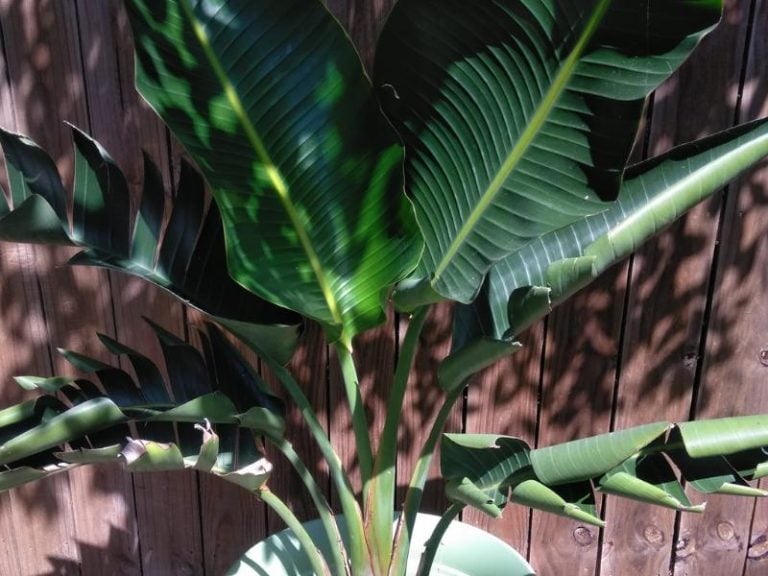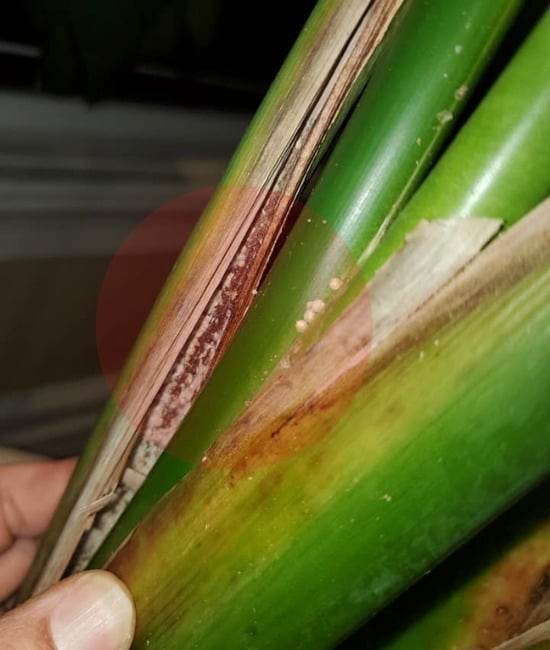How to Fix a Top-Heavy, Leaning Bird of Paradise
The bird of paradise is a striking, easy-to-grow plant. It can grow up to 6 feet when grown indoors while producing numerous stems that grow straight without support. However, you might have challenges preventing your bird of paradise plant from having an excessively leaning stem. So, what causes a top-heavy bird of paradise?
The main causes of a top-heavy bird of paradise are uneven exposure to sunlight and underwatering. To stop the plant from leaning, move it to a spot with full sun, trim it occasionally, and water it when the soil starts to dry out.
I’ve found that providing the right sized pot and a good soil mix can help prevent the plant from leaning over. Additionally, checking for diseases and treating them can also fix and prevent top-heavy plant.
I’ve dived deeper into these bird of paradise plant issues and how to resolve them below. Let’s get right to it.
Why is my bird of paradise leaning?
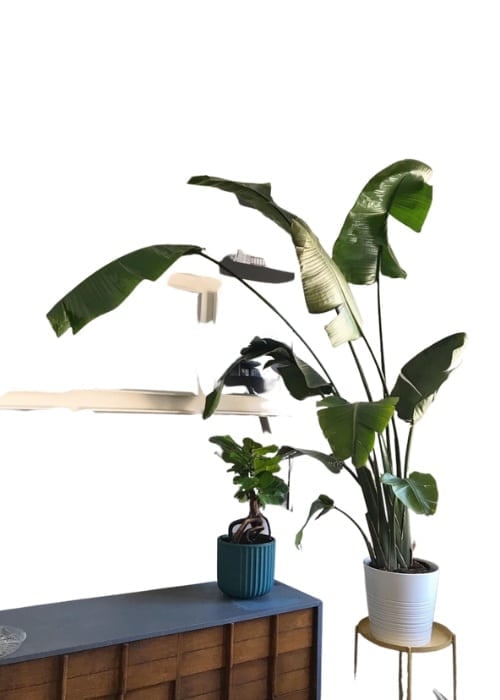
Let’s step back to basic plant biology. Plants lean toward where light is most accessible and require adequate support at the stem to grow upward. Otherwise, the plant will keep growing large foliage and gravitate towards the light, making it top-heavy.
Most of the reasons your bird of paradise is leaning are down to placement.
Here’s why your bird of paradise plant is top-heavy:
Plant shock after repotting
Shock is a common cause of leaning, bending, and drooping in bird of paradise plants. It mostly occurs in plants that have been recently bought, repotted, transported, or with a significant environmental change. The shock results from adjusting a plant to different habitats and establishing its root system in new soil.
If you recently propagated and repotted your bird of paradise, you will likely see it leaning and falling over due to shock.
Plant shock is usually natural and corrects itself within a couple of weeks as your plant recovers and begins straightening, gaining back the stem’s firmness.
Uneven sun exposure
Light is most likely not the issue if your plant suddenly started leaning. Leaning caused by uneven sun exposure is a gradual process. Your bird of paradise plant is more likely to receive most of its light from one direction if you do not keep your plant in a solarium or under grow lights.
Placing your plant near a south-facing window to receive sufficient light daily will not extend the same benefits to all stems and leaves.
I recommend rotating your bird of paradise plant frequently to allow it to receive sunlight evenly as this will correct the leaning and prevent future lopsidedness.
Root rot
Root rot in bird of paradise plants is caused by fungi that weaken or kill the plant’s roots. Leaning from root rot can be differentiated from other causes by significant yellowing of leaves, waterlogged soil, and mushy black stems in advanced cases.
You can correct the watering problem by changing your watering schedule if the plant’s stems are slightly leaning and have not started to decay.
Instead of watering once a week, check the soil for dryness using your index finger before watering. Water your plant if you feel the top one inch of the soil is dry.
Heavy foliage that needs trimming
Bird of paradise plants are evergreen and may keep their leaves for years. The leaves are large and may start to show signs of aging, so it is not unusual for older leaves to appear droopy and display small slits as they grow. Some strelitzia sleaves may appear to split.
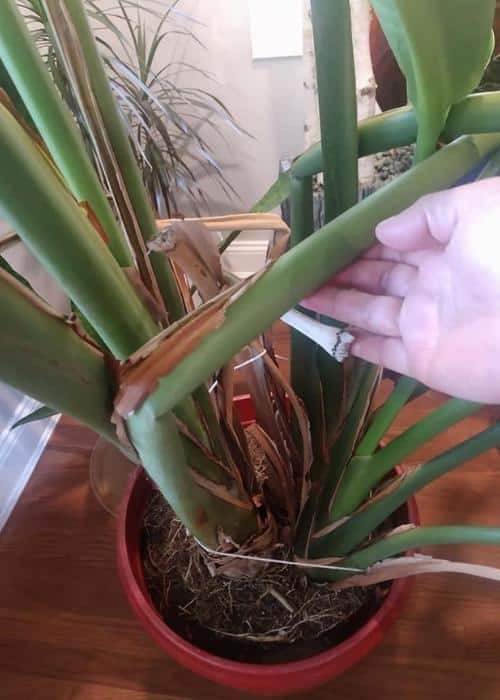
These limp, older leaves may encourage the leaning appearance in your bird of paradise plant.
If the tilted leaves look undesirable, consider pruning. Pruning is also used for removing stems that are leaning caused by damage.
It is important to reserve heavy pruning for spring at the beginning of the growing season to give your plant enough time to recover and produce new leaves.
Underwatering
Some varieties of bird of paradise can develop large leaves that need great support in order to remain upright. In plants, turgidity is highly supported by water. Your strelitzia plant will start to lean and fall over if they’re not watered correctly.
An underwatered strelitzia will lose its turgidity; if the foliage is big, the top part of the plant will start to droop and lean over.
Read my guide on how to care for the bird of paradise plant here to make sure you follow a proper watering schedule for the plant.
Potting problems
Bird of paradise likes to be slightly root bound; thus, it does not need to be repotted annually. However, repotting provides fresh nutrients and ensures the plant’s pot is not too small to support the plant at the top of its stems.
If your pot is too small to support your plant, it can lead to leaning and falling off your bird of paradise plant.
Repotting every 18 to 24 months and choosing an inch larger pot will provide stability for your plant.
How to fix a leaning, top-heavy bird of paradise
After examining your bird of paradise plant and correctly identifying the cause of its leaning and top-heaviness, the next step is to fix the specific problem to prevent further damage.
Implement these solutions to fix a leaning, top-heavy bird of paradise plant.
1. Support the plant with a stake
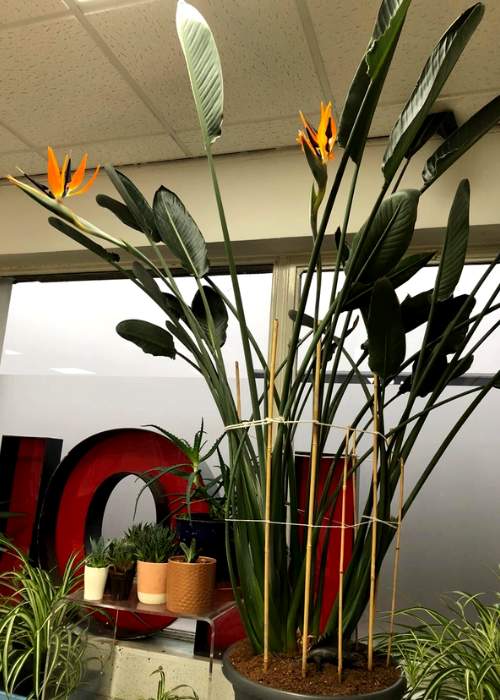
You will need a stake to support your bird of paradise plant and stop it from leaning and falling over. Bamboo or vinyl-coated metal sticks are the best for your plant. A stretchy strap will come in handy in firmly securing the stake to the plant.
Here’s how to stake your bird of paradise plant:
- Cut one end of the stick at a sharp angle using the pruners so it’s easy to insert the stick into the soil.
- Put the stick behind the leaning stem and push the stick inside the soil, then attach it to the stem.
- Use the strip to tie the plant‘s stem to the stick loosely.
- Check the strip once in a while to see if it has gotten too tight for the plant. If it has, move it up or down to loosen it so it does not interfere with the plant’s growth.
2. Repot the plant in a larger pot
Strelitzia plants do not need to be repotted annually. But, when you see signs of leaning, it might be because the pot is too small to support the plant’s width at the top of its stem.
In this case, consider repotting your bird of paradise plant in a pot one inch larger than the current pot. Doing this every 18 to 24 months provides stability to your plant.
Read my article on choosing the right soil for bird of paradise plants here.
3. Rotate your plant to for it to receive light is evenly
When all the light comes from one side, that side will grow strongly while the opposite side will not. Rotating your plant frequently around 90 degrees after a couple of weeks will ensure even growth on all sides.
Alternatively, move the plant to an area fully exposed to light so it can record even upward growth.
4. Prune the top-heavy plant
The evergreen bird of paradise plant keeps its large leaves for years, and they may start to age. They will show small slits and droop as they grow, causing a leaning appearance on your plant.
Pruning is, therefore, a great practical solution.
Using sharp pruning shears, remove any leaning stems. Remember that while pruning away the leaning stems and heavy foliage is great, reserve pruning for early spring seasons gives your bird of paradise plant ample time to recover and produce new leaves and blooms.
How to keep a bird of paradise small
Genetics and the growing environment heavily influence the size of a plant. A healthy bird of paradise plant will always have large striking leaves and colorful flowers. However, you can make adjustments to keep the plant small.
- Trim the plant regularly.
- Choose a dwarf bird of paradise such as strelitzia juncea.
- Pruning damaged, old, split, or spotted leaves in early spring will keep the plant small while giving it sufficient time to recover during summer.
- You can minimize water supply and reduce light exposure. This watering schedule will promote stunted growth.
Can you trim a giant bird of paradise?
You can trim a giant bird of paradise plant to maintain its growing shape or keep it at a manageable size.
The bird of paradise plant does not require often trimming like other perennials, but you can trim it to remove the flower stalks after they bloom.
Remove the leaf shoots from the base of the plant and transplant them elsewhere to help the plant recover. It will keep your plant looking beautiful.
Conclusion
Shock, uneven distribution of light, root rot, small pots, and overgrowth are all possible causes of a bird of paradise plant leaning. Correcting these issues will restore the upright stature of your bird of paradise plant.
MORE ABOUT BIRD OF PARADISE
- Plants Similar to Strelitzia
- Why is My Bird of Paradise Plant Curling Inward?
- Bird of Paradise vs Traveler’s Palm
References
- University of Florida Extention: Bird of Paradise plant
University of Central Florida: Trimming Bird of Paradise



